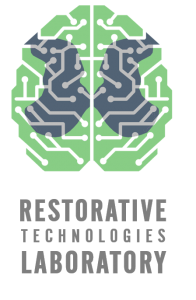The Mondello Laboratory investigates strategies for promoting axonal and synaptic plasticity after spinal cord injury to support the restoration of sensory and motor functions. Currently, we are focused on therapeutic neuromodulation via both optogenetic & electrical stimulation strategies in rodent models of spinal cord injury.
Optogenetic Stimulation: Optogenetic stimulation uniquely allows for cell-specific targeting to either activate or inhibit cell activity. Previously, our group determined that neuron-specific optogenetic spinal stimulation paired with rehabilitation promoted robust recovery of forelimb recovery following a moderate hemicontusion in rats. This recovery was likely supported by the significantly enhanced axonal growth and synaptic modifications that were also detected. We continue to explore the effects of optogenetic spinal stimulation on circuitry plasticity and recovery looking at different cell targets, stimulation paradigms and locations.
Electrical Stimulation: Electrical stimulation is the current gold standard for therapeutic neuromodulation after spinal cord injury, however many studies, both pre-clinical and clinical, focus on lower limb recovery. Our group has been investigating the effects of epidural electrical stimulation targeting upper limb recovery and cervical cord circuitry reorganization after cervical spinal cord injury.
Combinatorial Therapies: More than likely, a combinatorial therapeutic approach will promote the greatest degree of function-restoring plasticity and recovery after spinal cord injury. Currently, we are evaluating combining neuromodulatory approaches with stem cell transplants and axon growth-promoting peptides.
We are always open to collaborative exploration. Please reach out to Dr. Mondello with project ideas (mondello@uw.edu).
![]()

